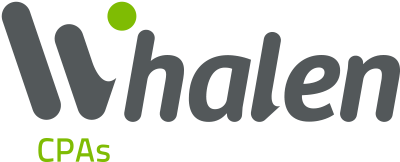Footnotes: The narrative behind the numbers
Although footnote disclosures appear at the end of reviewed or audited financial statements, they’re far more than a regulatory formality. They provide critical insight into a company’s accounting policies, unusual transactions, contingent liabilities and post-reporting events. The Financial Accounting Standards Board’s conceptual framework says footnotes “are intended to amplify or explain items presented in the main body of the statements.”
Here are answers to some questions that business owners and managers may have about complying with the disclosure requirements under U.S. Generally Accepted Accounting Principles (GAAP).
What are footnote disclosures?
Footnote disclosures are explanatory notes that accompany financial statements. They offer readers the clarity needed to assess risks and financial viability. The level of disclosure varies depending on the level of assurance provided.
Footnotes aren’t exclusive to audited financial statements. Under the American Institute of Certified Public Accountants’ Statements on Standards for Accounting and Review Services, full footnote disclosures are also required for reviewed financial statements under GAAP.
Footnotes aren’t required for compiled financial statements unless management requests them. If full disclosure is requested, the CPA assists in drafting them based on management’s representations. If footnotes are omitted, compiled financial statements must clearly communicate that management accepts responsibility for the omission.
Who’s responsible for the disclosures?
Management provides the underlying financial information for disclosures and is ultimately responsible for the content of footnotes. However, the CPA who prepares a company’s financial statements plays a critical role in drafting and reviewing them and ensuring they comply with applicable accounting frameworks.
For audited and reviewed statements, the CPA helps translate management’s data into clear, accurate disclosures that comply with GAAP or other applicable standards. When preparing compiled financials, the CPA drafts them only when they’re requested and approved by management.
Why do footnotes matter?
Footnote disclosures help readers “read between the lines.” They offer crucial information not readily apparent in the core financial statements and can alert users to hidden risks. Consider the following examples:
Going-concern issues. Financial statements are prepared under the general assumption that the business is a viable going-concern entity. Disclosures are required if management or the CPA believes the company may not survive the next 12 months. For example, a footnote might say, “Management has evaluated the company’s ability to continue as a going concern and determined that recurring operating losses and negative cash flows raise substantial doubt about its ability to continue operations beyond December 31, 2025. Management plans to secure additional funding to address this risk.”
Related-party transactions. Companies may give preferential treatment to, or receive it from, individuals or entities with close ties to the company’s management. Footnotes must disclose such related-party transactions to ensure users are aware of any favorable or non-arm’s-length arrangements. If these disclosures are omitted, the financial results may be misleading, especially if such arrangements are temporary or subject to change. For example, if a company rents property from the owner’s relatives at a below-market rate and fails to disclose this, it could appear more profitable than it truly is.
Accounting changes. Any switch in accounting methods must be disclosed, including the rationale and financial impact. While such changes may be required due to regulatory shifts, they can also be used to manipulate results. Transparent footnotes ensure stakeholders can discern whether changes are justified or opportunistic.
Contingent and unreported liabilities. Not all obligations show up on the balance sheet. Footnotes should disclose contingent liabilities, such as pending lawsuits, IRS inquiries and warranty obligations. Auditors often confirm contingent liabilities by reviewing legal correspondence and contracts, and proper disclosure helps prevent surprises that could derail financial performance.
Subsequent events. Significant events occurring after the balance sheet date but before financial statement issuance — such as a major customer loss or regulatory enforcement action — must be disclosed if they could materially affect the business. For instance, a company’s 2024 financial statement footnotes might say, “On February 20, 2025, the company’s largest customer filed for bankruptcy. The outstanding accounts receivable balance of $180,000 has been written off as uncollectible.” Such disclosures help users assess the company’s performance and avoid being blindsided by sudden downturns.
Transparency equals trust
Clear, tailored footnotes — free from boilerplate language — demonstrate that a business isn’t hiding anything. This fosters trust and credibility with external stakeholders, such as investors, lenders, and regulators, while equipping management with vital context to make strategic decisions.
In today’s high-risk marketplace, transparency isn’t just good practice; it can provide a competitive advantage. Contact us to learn more. We can help refine your company’s footnote disclosures and evaluate those of potential partners or competitors.





